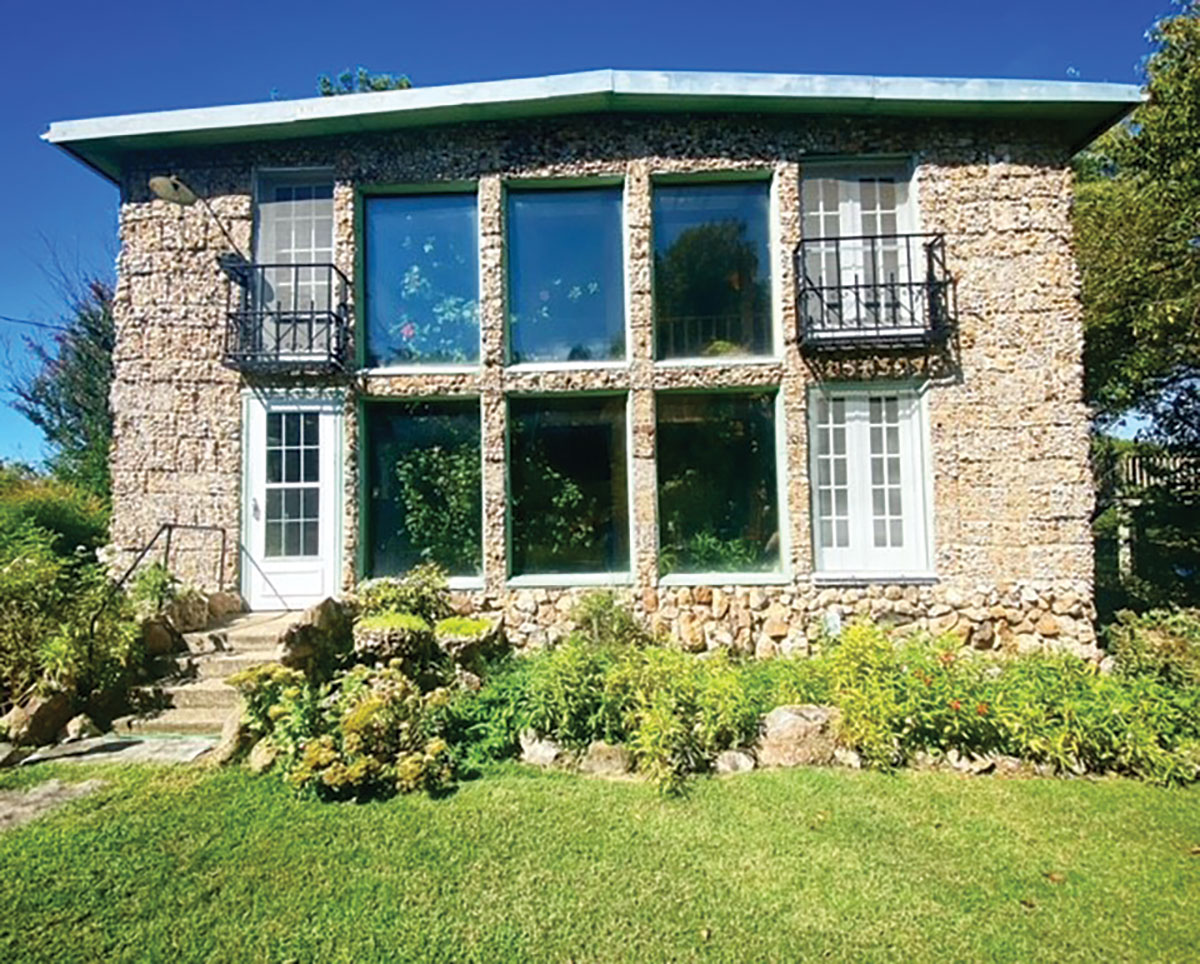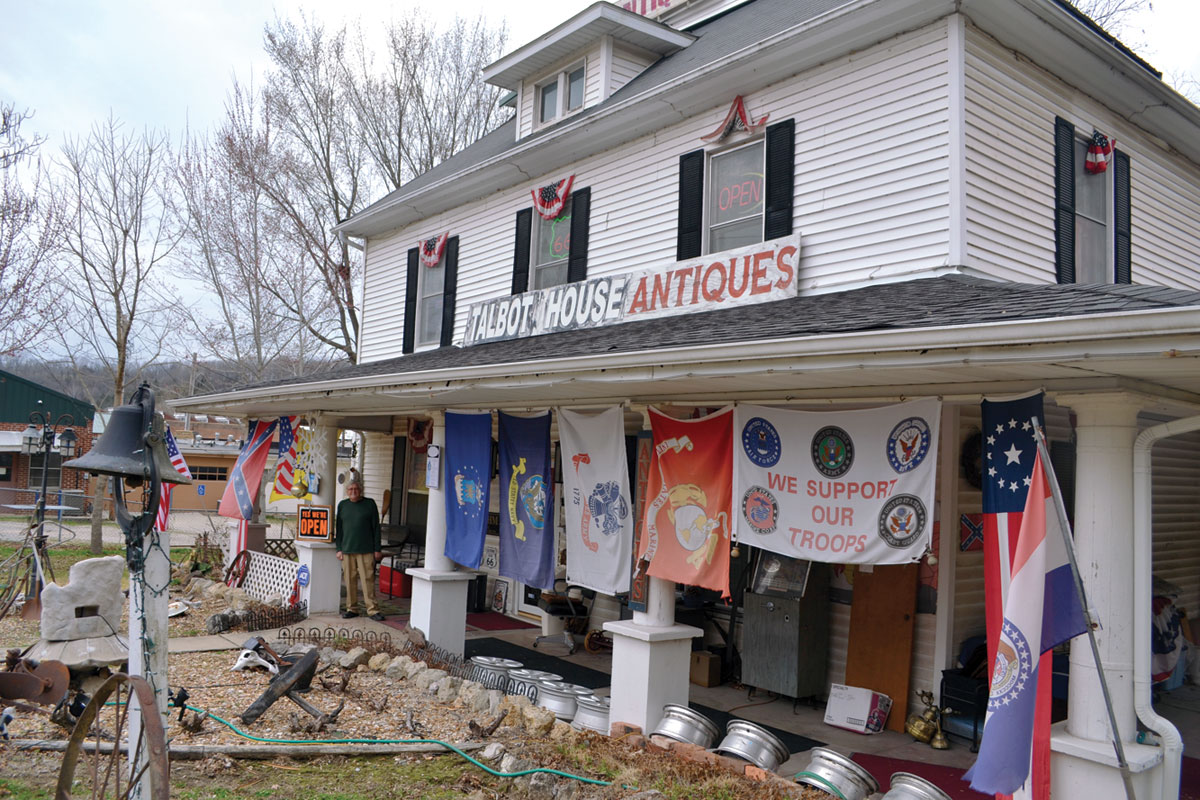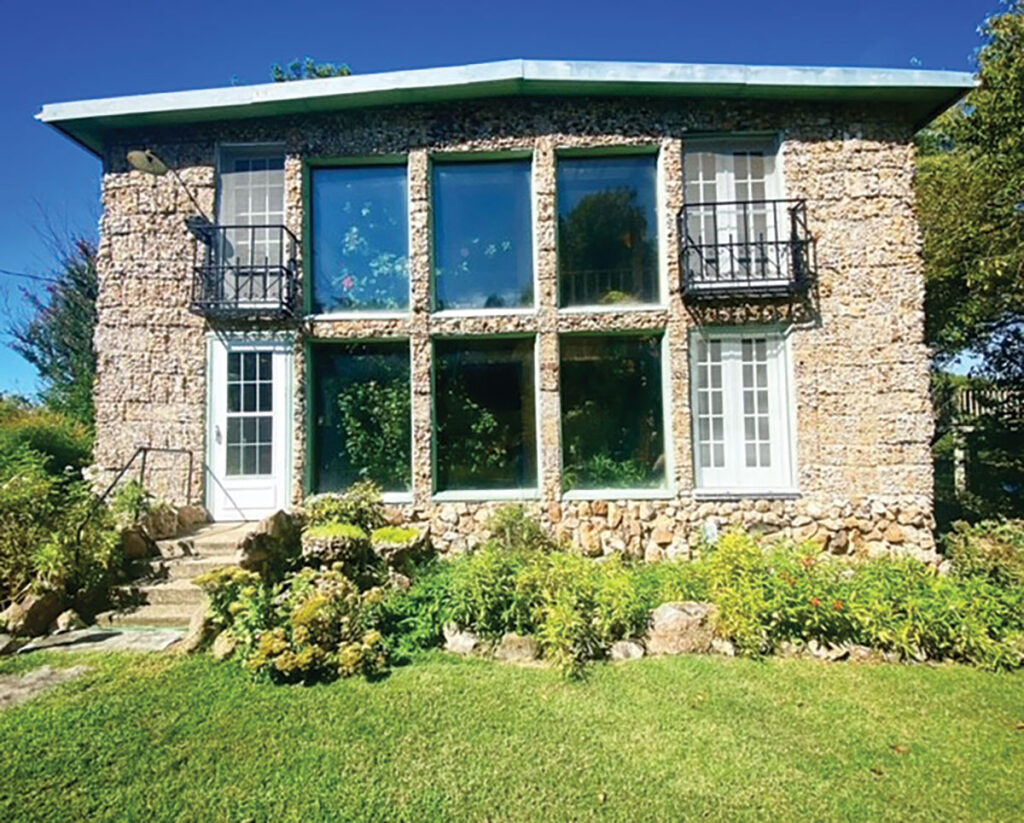
Quigley’s Castle began as a woman’s dream home
EUREKA SPRINGS, ARK. – Just outside of Eureka Springs, Ark., tucked secretly down a gravel country road, off scenic paved highway is an oasis of the Ozarks revealing her glowing beauty, is a magical place called Quigley’s Castle.
This historic homestead is known as the “Ozark’s Strangest Dwelling.” It was added to the National Register of Historic Places on May 30, 2003. It is open to the public from March through November.
A great-granddaughter of the original owners provides an engaging account of the home’s history and welcomes any questions from the visiting audience.
The original owners of this fantastic and otherworldly mansion were Albert Quigley (1905 – 1972) and his wife, Elise Fioravanti Quigley (1910 – 1984). Their great-granddaughter, Kendra (who answers to ‘Gabby’) Quigley, is the third-generation manager and caretaker of the home and grounds. She lives onsite with her parents and greets each guest with the story of how this architecturally sound rock museum of a home was lovingly birthed into existence and has charmed countless Ozark visitors ever since.
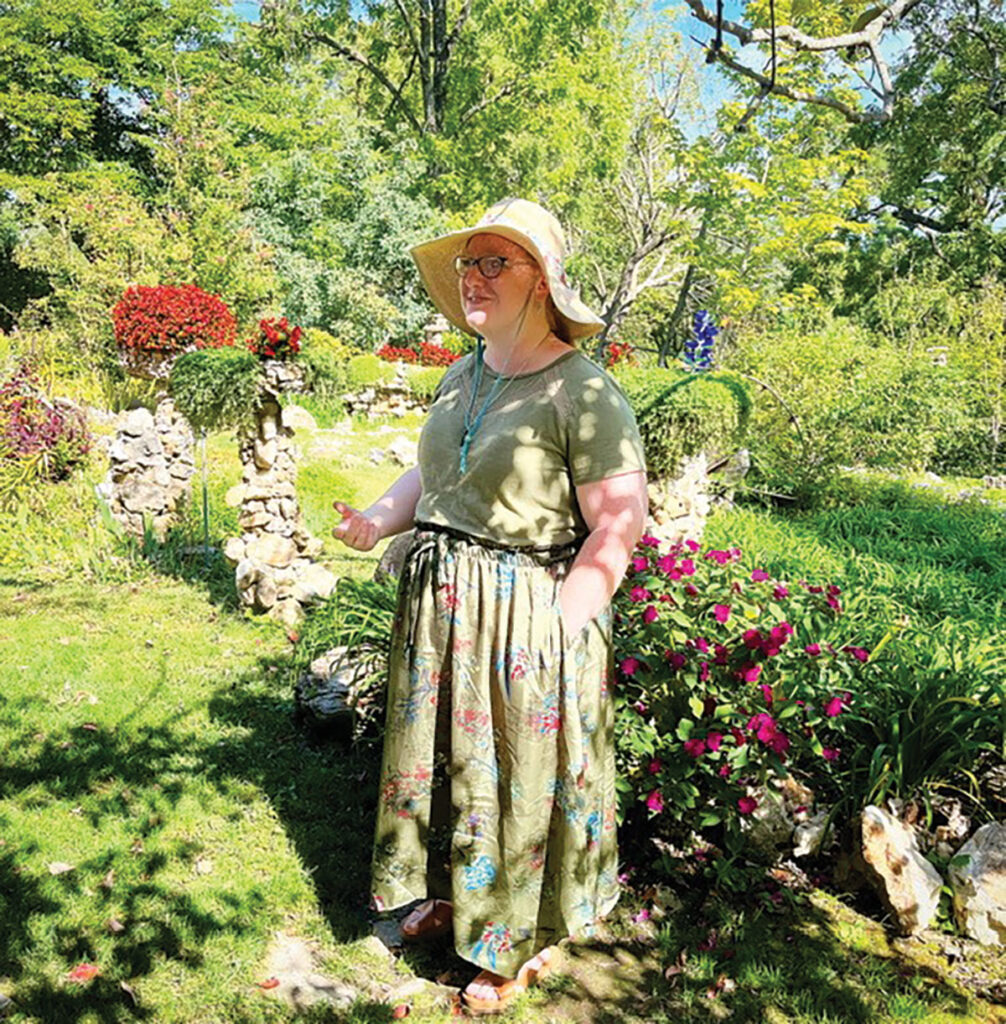
As the real-life fairytale goes, Gabby’s maternal great-grandmother, the Italian Elise Floravanti arrived in the Ozarks when she was 9 years old. At the young age of 18, she met and married the Scottish-Irish lumber mill worker, Albert Quigley. They started their quickly growing family soon after the wedding bells rang. Together, they had five children. Four of which were active in the military (pictures in their World War II uniforms are proudly displayed in one of the two bedrooms that guests are invited to tour).
Mrs. Quigley was an avid lover of nature. She enjoyed quiet reflections walking along the water’s edge of the flowing creek which ran through their property. She collected rocks, arrowheads, shells, flowers, butterflies, any part of nature she could get her hands on. Her favorite pastime was being in nature. A deeply spiritual woman, she felt closest to God in the natural beauty of the outdoors Ozarks.
In 1943, Elise Quigley told her husband of her grand plans for a completely natural rock-sided home. Her greatest desire for a home was one in which “she felt she was living in the world in-stead of inside a box.” Once she had the idea in her mind, she used scissors, paste, cardboard and match sticks to make a model of the home she desired to live out her years on this earth.
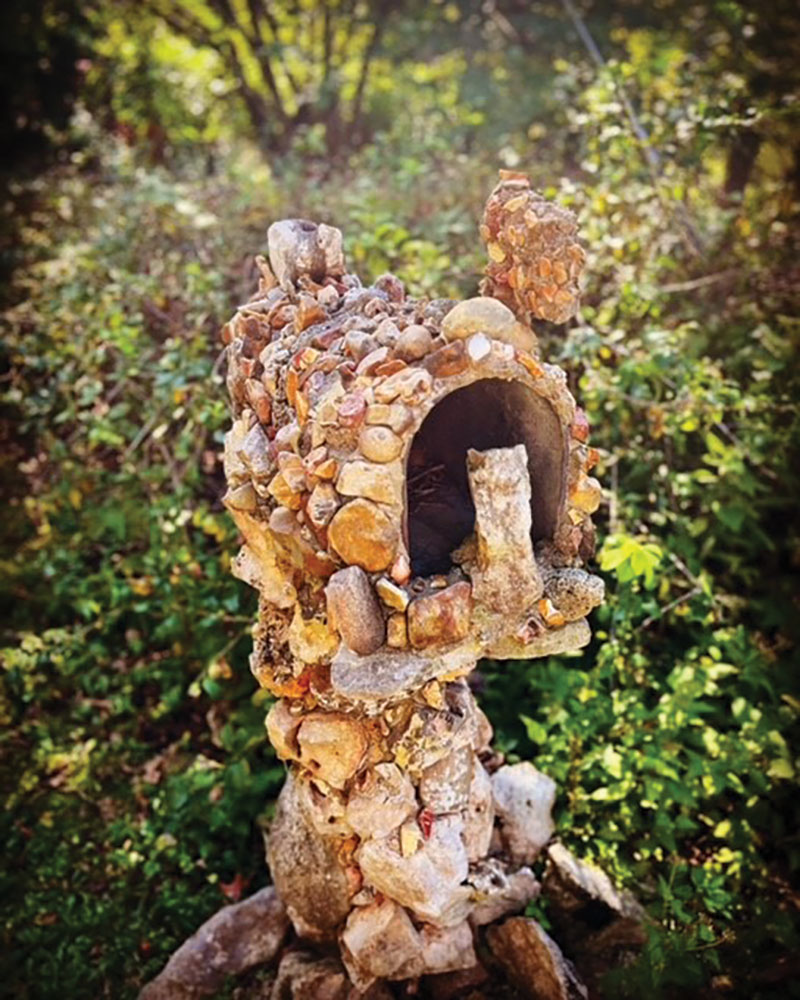
Her dream happened to arrive with the onset of WW II. Albert wanted to wait on the home construction, as the glass needed for Elise’s extensive window design, was rationed during the war. However, his wife knew what she wanted and was beyond ready to get started. One day, Albert went off to work at the local lumber mill and she and her five children tore down the dwelling in which they were currently living, in efforts to speed up the massive construction process for her beloved dream home to reach fruition.
Rocks were brought in by the wagonload. Elise and her family would place up to a row of rocks a day. Flour sack material was used to keep the elements out during the building of the home. After the war commenced, Mrs. Quigley had the sides of the square structure completely sided in rocks and shells.
Never one to sit still, Mrs. Quigley started her fascination of building and creating by working on outdoor projects. There is a bench sitting area made completely out of rocks that Elise made for her family in the early 1930s. Everywhere visitors look on the Quigley grounds, there are rock sculptures, rock pots full of plants and flowers, even a rock birdhouse, all surrounded by the most glorious bright flowers, plants, herbs, and colorful jar/wine bottle tree displays. One structure that stood out was a rock mailbox, complete with a door and flag post, completely constructed from the plethora of rocks peppered throughout this Ozark soil. There is also a very large rock table in the back of the home which is quite an impressive sight to behold.
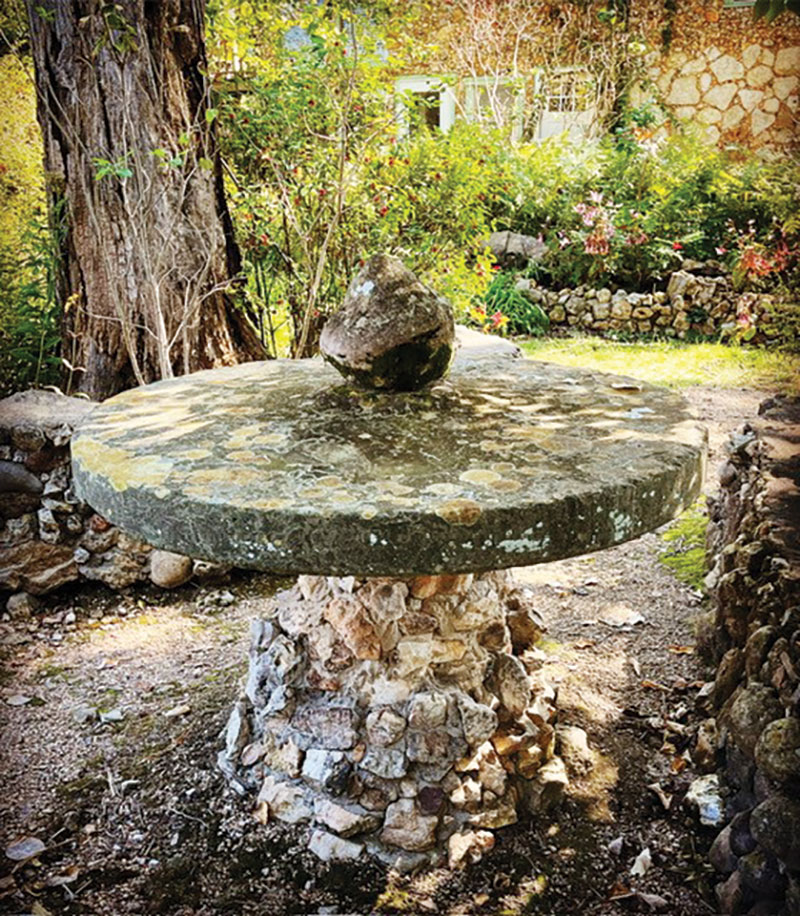
Many of the plants Elise desired to display inside her home are still alive today. Three such plants are more than 78 years old. These original, beloved plants include a Chinese Hibiscus, a Night Blooming Cereus and an Asparagus Plumosa. There are 32 window spaces for the indoor/outdoor plants to thrive in.
When touring the home, guests are privy to the indoor/outdoor gardens that grow along the edge of each room within the house. In one of the upstairs bedrooms, there is a quilt display in which many of the handmade quilts were designed and crafted by Mrs. Quigley. Several of the Quigley quilts are displayed within the home, hung on walls, decorating beds, and amassed in the airtight cedar chest.
Another bedroom hosts a full wall, covered with Mrs. Quigley’s extensive butterfly collection. Pictures are allowed, but touching the protective layer of glass is discouraged. Many of the butterflies’ vibrant colors have faded over the years, but they are still a sight to behold.
The home is a definite must-see for all Ozark adventurers. The grounds in the spring, summer and fall are breathtaking. The well-kept antiques displayed in the home are a sight to behold. And the historical significance of this family’s hard work and devotion to nature is one of the greatest treasures wrapped up in this amazing family estate that has stood for generations.

